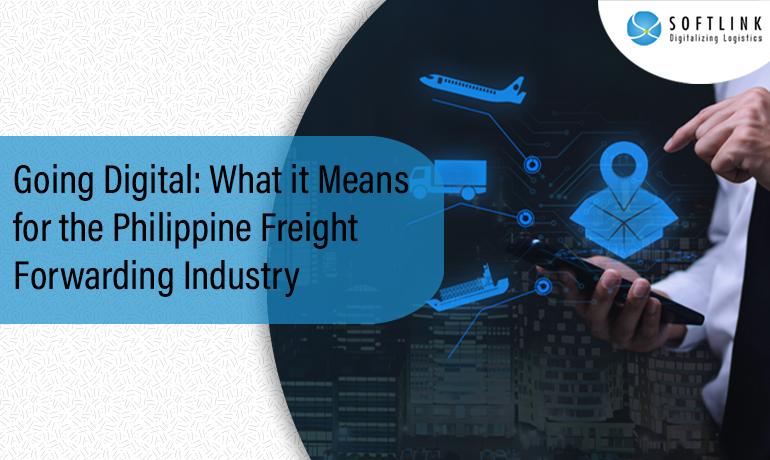The Philippines freight forwarding industry is going through a significant transformation with the advent of digitalization. What does digitalization mean for the Philippines freight forwarding industry, and how will it impact the sector?
From automating processes to digitizing documents, freight forwarders are increasingly turning to technology to streamline operations and improve customer experience.
According to a recent report by Grand View Research, the global digital freight forwarding market is projected to reach $54.82 billion by 2027, a CAGR of 24.1%. The Philippines is no exception to this trend. Favorable government policies including the famous ‘Build, Build, Build’ program, increasing number of mobile phone users and the subsequent increase in demand for international goods constitute some of the key factors for the rise of digitalization in the region. It is therefore imperative that Philippine freight forwarders ride this wave of digitalization if they are to succeed – and there are many good reasons to do so.
Digitalization – Playing a Vital Role in Improving Efficiency and Competitiveness of the Forwarding Industry
One of the primary benefits of digitalization is that it allows for greater automation and streamlining of logistics processes. For instance, the use of cloud-based software systems enables freight forwarders to track shipments in real-time, manage inventory, and reduce operational costs. Furthermore, automation can help to eliminate manual processes, reduce errors and increase accuracy.
Another area where digitalization makes a significant impact is in improving the customer experience. Online portals and digital platforms enable customers to manage their shipments, track their orders, and receive real-time updates on their delivery status. This improves transparency and communication between customers and freight forwarders, leading to increased customer satisfaction and loyalty.
The use of digital platforms can also improve the speed and efficiency of customs clearance processes, reducing the time and costs associated with regulatory compliance.
Challenges of Going Digital
Despite the many benefits of going digital, it also comes with several challenges. One of the primary challenges is the cost of implementing digital technologies. This can be a significant barrier for small and medium-sized freight forwarders, who may not have the resources to invest in new technologies. However, there are multiple considerations to think of: the benefits of investing in digital technology far outweigh the cost in the long run. As far as the Philippine market is concerned, now is the right time to capture market share using the latest tech in the forwarding industry. Lastly, given the evolutionary state of the global industry, the discussion around the subject of technology adoption will soon change from ‘Use technology to thrive’ to ‘Use technology to survive’.
Another major challenge is the need for skilled labor. Digitalization requires expertise in technology and data analysis, which may not be readily available in the Philippine freight forwarding industry. As a result, freight forwarders may need to invest in training programs or recruit new talent to meet the demands of a digitalized industry. However, as with the nature of cost investments, it is all about building an ecosystem that will help forwarders thrive, complete with its systems, processes and people.
Additionally, there are concerns about data privacy and cyber security. With the increasing reliance on digital technologies, freight forwarders need to ensure that their systems are secure and that customer data is protected. To mitigate these risks, freight forwarders need to invest in robust cybersecurity measures, such as firewalls, encryption, and regular security audits.
Future of Digitalization in Freight Forwarding
The future of the freight forwarding industry is digital. In the coming years, we can expect to see increased adoption of digital technologies, including AI, blockchain, and the IoT. These technologies will enable freight forwarders to provide more efficient and cost-effective services to customers.
One of the most significant developments in digitalization is the use of AI for predictive analytics. This technology can help freight forwarders anticipate customer needs, optimize routes, and improve supply chain efficiency. Additionally, blockchain technology can provide increased transparency and security in the supply chain, which can help build trust and reduce fraud.
In conclusion, digitalization has the potential to transform the Philippines’ freight forwarding industry, improving efficiency, speed, and customer satisfaction. However, it also poses several challenges that need to be addressed. Freight forwarders need to invest in digital infrastructure and cyber security while upskilling their workforce to operate in a digital environment. By doing so, the Philippines freight forwarding industry can stay ahead of the curve and remain competitive in an increasingly digital world.
Originally Published in Portcalls Asia Magazine






0 Comments